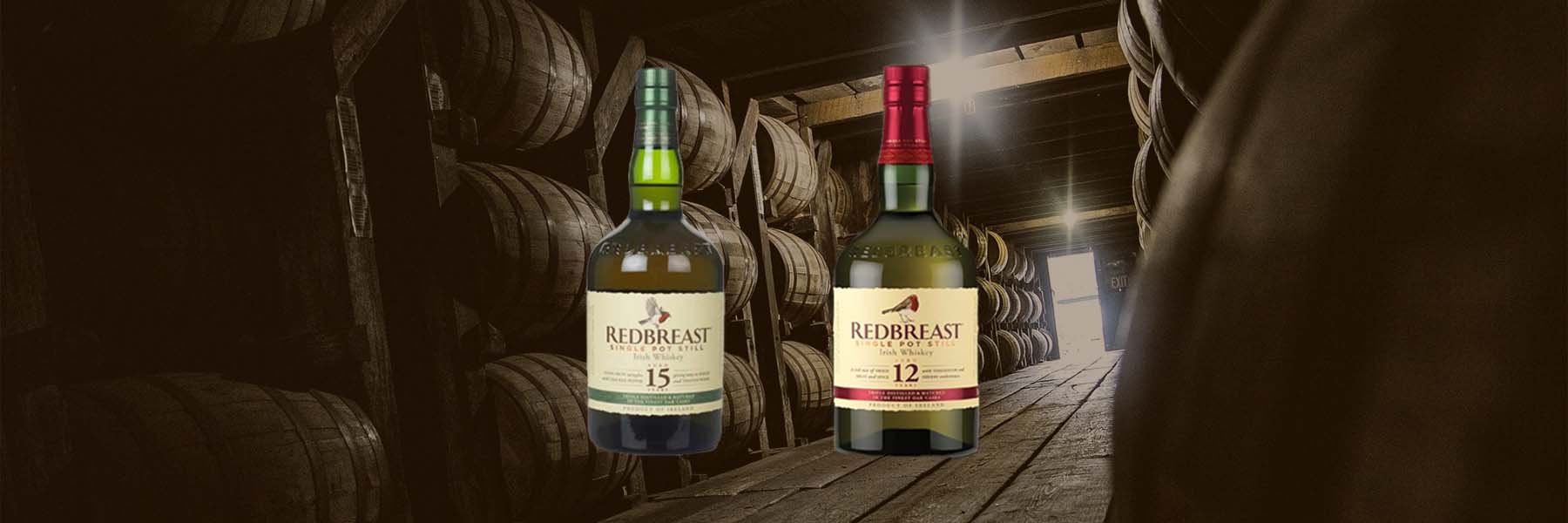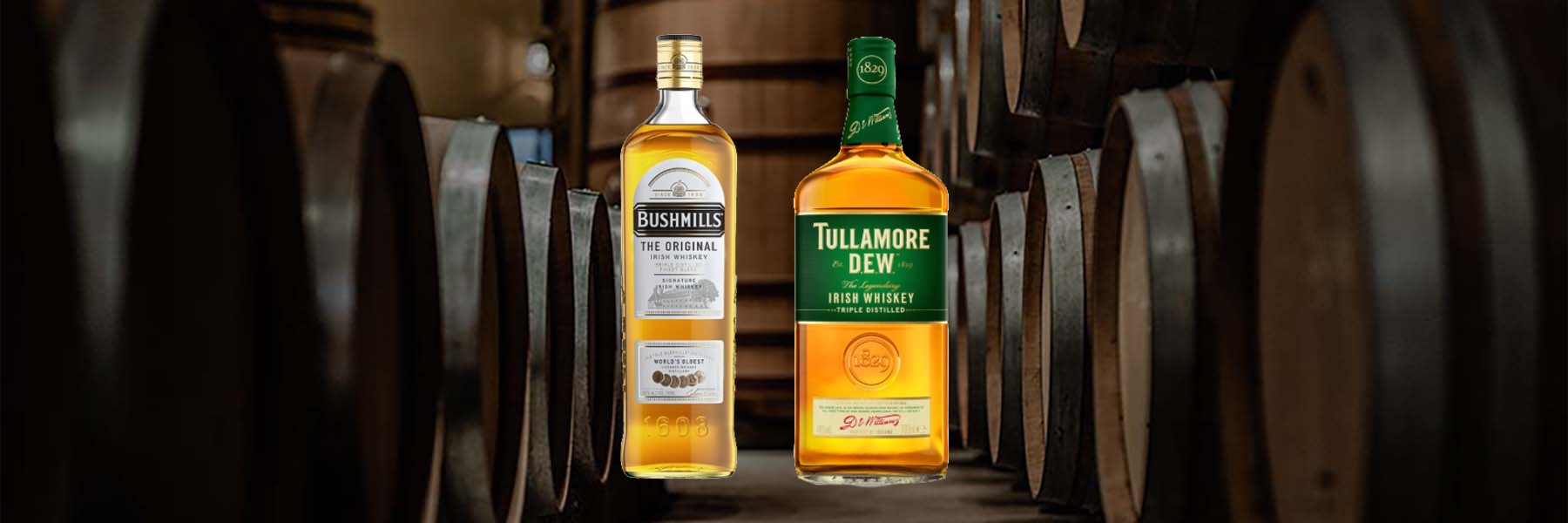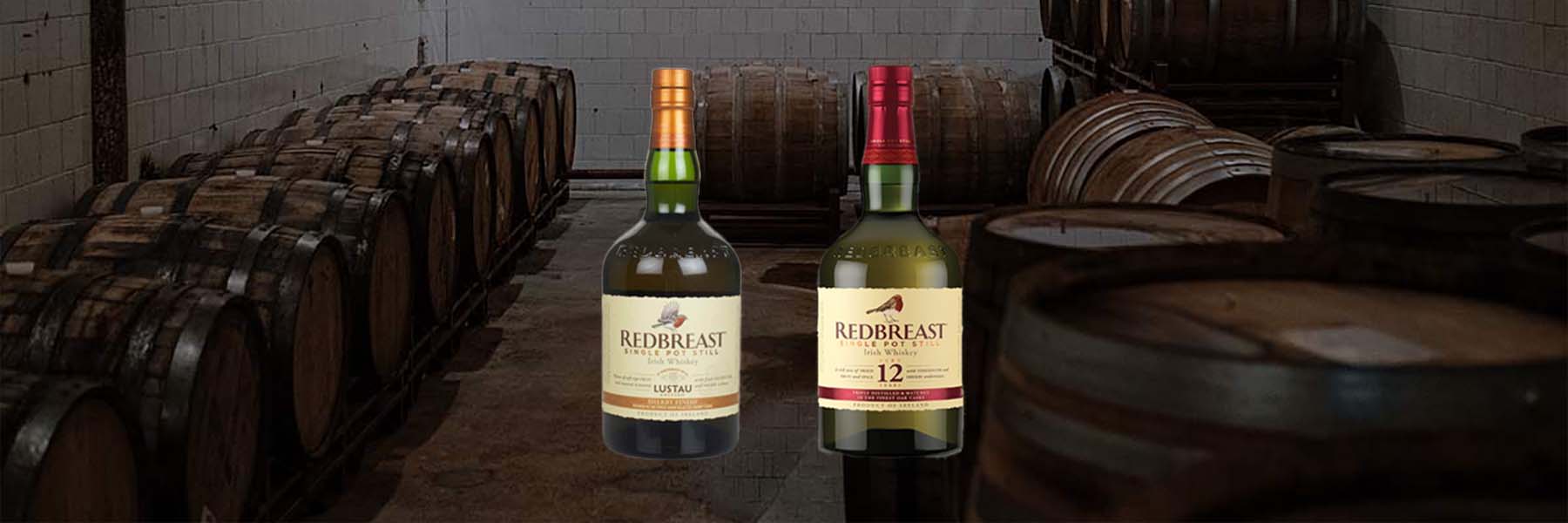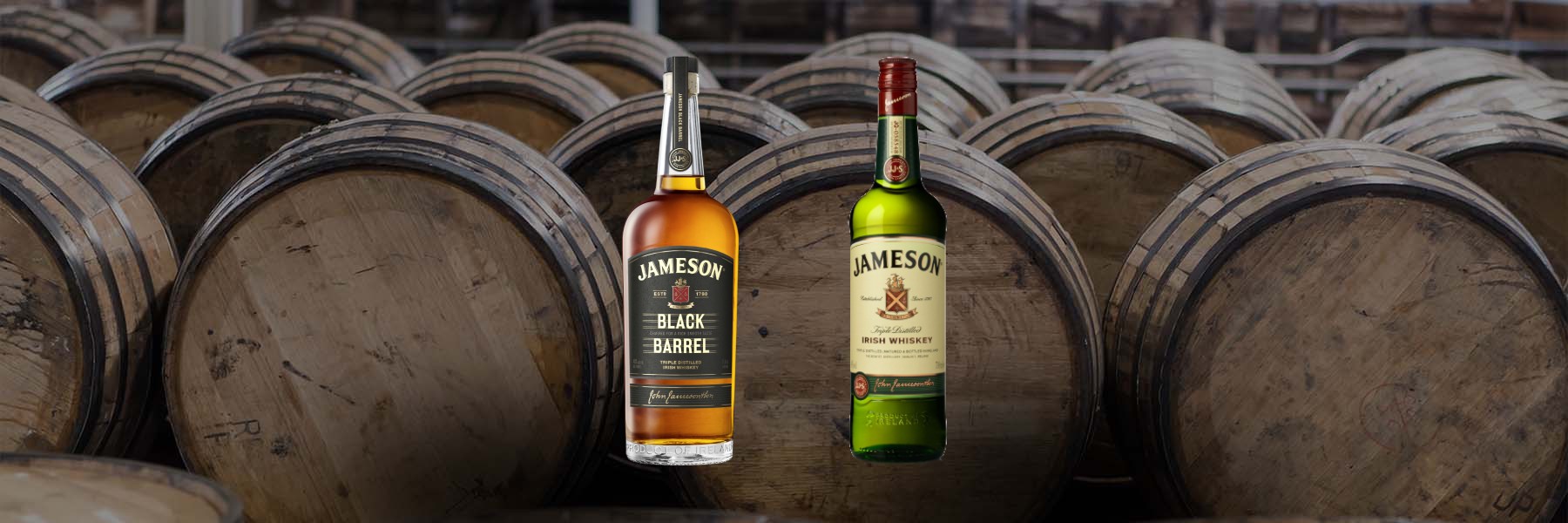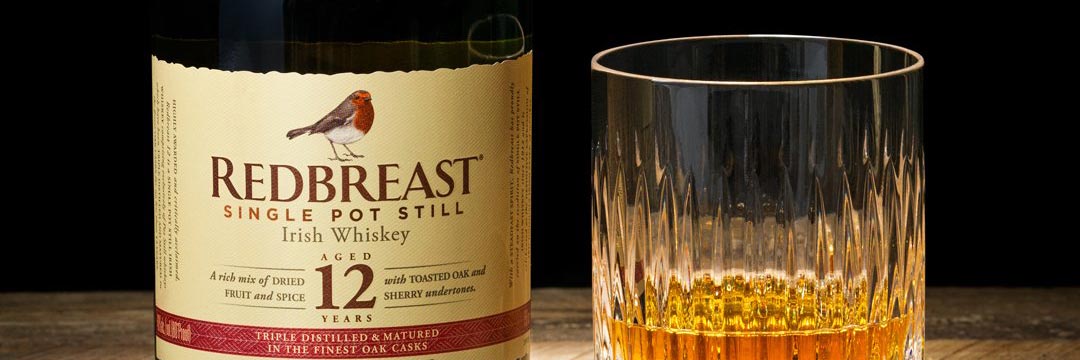Redbreast 15 vs. Redbreast 12: A pot still sibling rivalry
Last updated on August 22nd, 2024
Redbreast has been my go-to Irish whiskey for years. But lately, I found myself caught in an age dilemma: Redbreast 12 or Redbreast 15?
If you’ve ever wondered if those extra years in the barrel really make a difference, you’re in good company. I decided to do a side-by-side tasting of these two beloved expressions, and let me tell you—there were some surprises.
Join me as I unpack the nuances between Redbreast 12 and 15, and discover which one might just become your new favourite pour.
Quick backstory
The Redbreast line-up has been around since the early 1900s, and it’s one of best selling single-pot still whiskeys in the world. If you’re unsure what that means, pot still whiskey is unique to Ireland. It’s made in one distillery, using a mix of both malted and unmalted barley in traditional pot stills. It’s this process that gives Redbreast its unique, robust flavour.
Redbreast 15 vs. Redbreast 12: Quick-Look Comparison
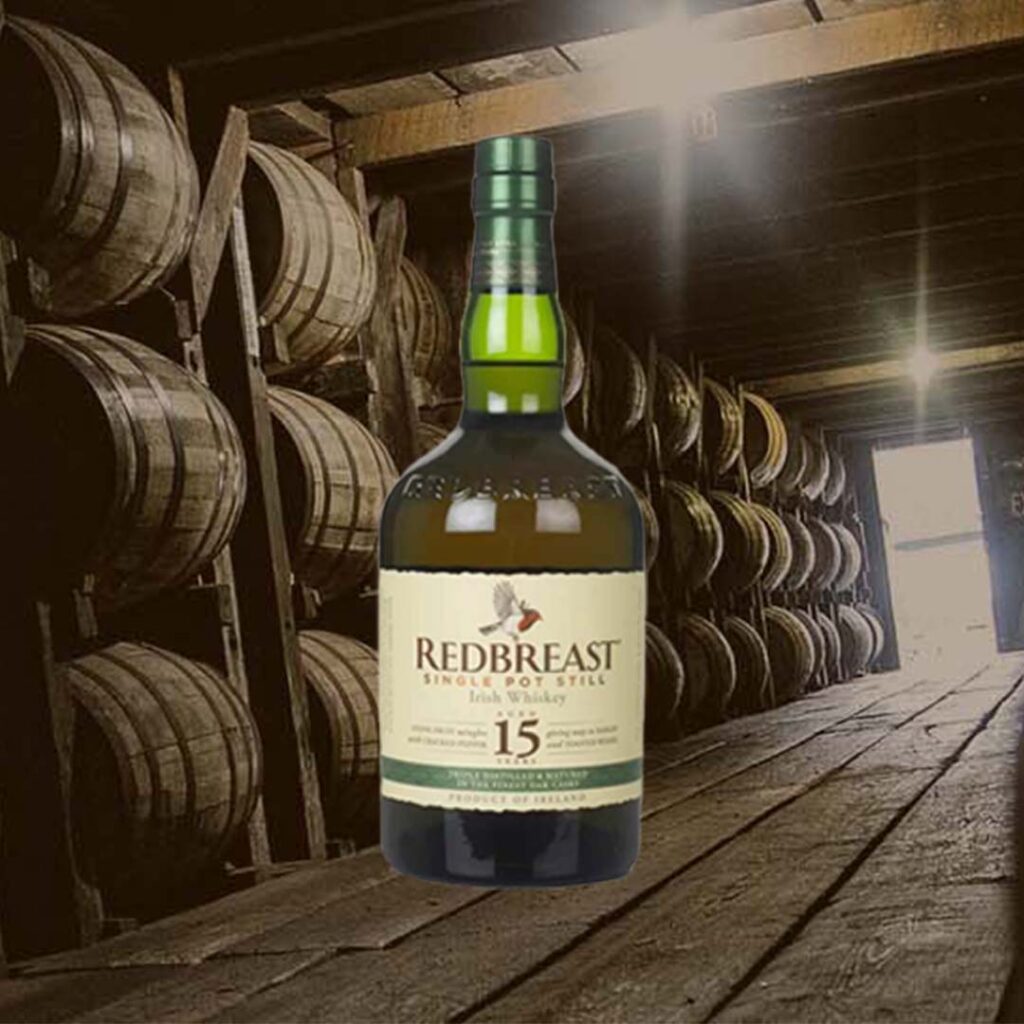
| Redbreast 15 | |
|---|---|
| Nose | Rich, toasted almonds, and fruity notes |
| Palate | Milk chocolate, cinnamon, and sweet |
| Mouthfeel | Silky, luscious, full-bodied |
| Finish | Long, apple turnovers, and hints of cinnamon |
| Age | 21 years old |
| Cask/Barrels | Oloroso Sherry casks |
| Strength | 46% ABV/92 Proof |
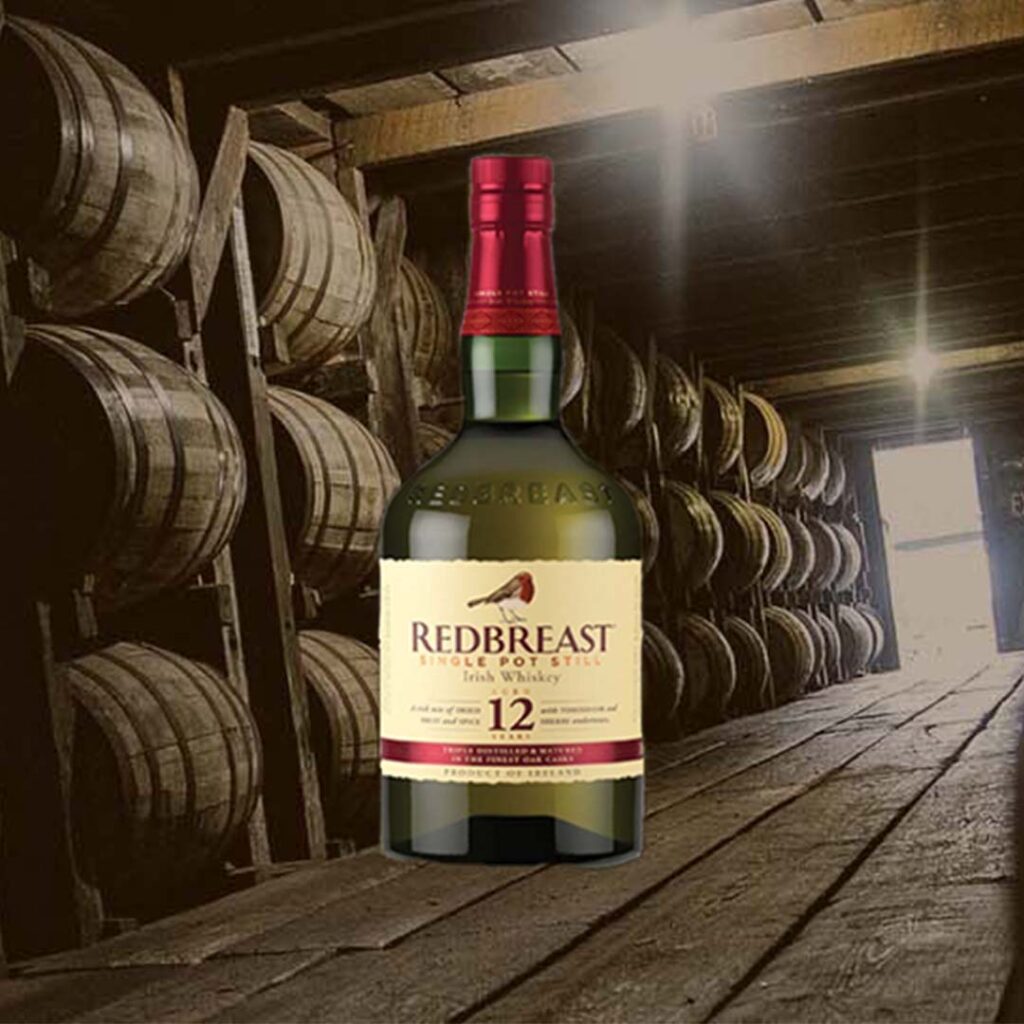
| Redbreast 12 | |
|---|---|
| Nose | Nutty, rich, ripe fruit |
| Palate | Spicy, creamy vanilla, dried fruit |
| Mouthfeel | Full-bodied, oily, and smooth |
| Finish | Long, warming, and complex with a touch of spice |
| Age | 12 years |
| Cask/Barrels | Bourbon and Oloroso Sherry casks |
| Strength | 40% ABV/80 Proof |
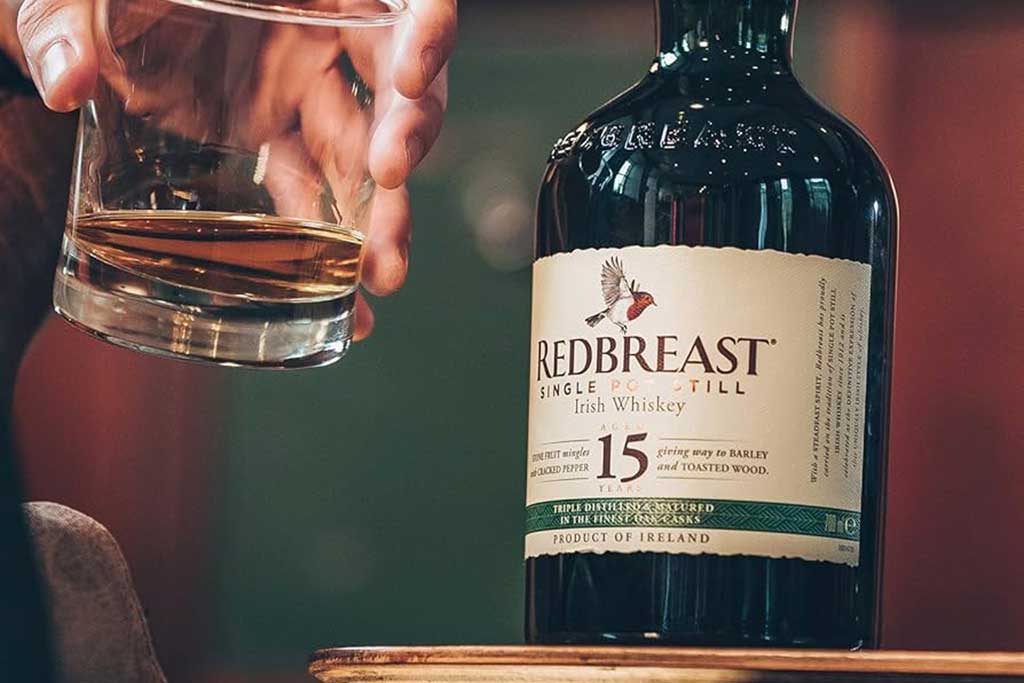
Redbreast 15 Review
Redbreast 15 holds a particular place in my repertoire. It’s a quality Irish whiskey that I chanced upon a while ago, and the experience has stuck with me. Here are my thoughts:
On the nose, the Redbreast 15 has notes of ripe fruits, predominantly pears, and oranges. This fruity sweetness is quickly followed by a hint of warm spice, somewhat akin to nutmeg or cinnamon, and then the understated, but discernible, scent of oak.
On the palate, the initial sweet fruitiness detected on the nose returns, but it’s more mature, accompanied by deeper notes of dark chocolate and a hint of roasted nuts. There’s a slight touch of vanilla and a smidgen of oak, balancing out the overall flavour so that no single note dominates. The spice, while present, doesn’t overpower but adds an appreciated complexity.
The mouthfeel is a rich, full-bodied sensation that’s slightly creamy but not overly so. It spreads across the palate, demanding your attention, but in a comforting rather than intrusive manner. I’d describe the experience as satisfying and complete.
The finish lingers, leaving traces of dried fruits and oak to savour long after the liquid has gone. The sweetness fades, replaced by a gentle warmth that stays with you, inviting the next sip, but also satisfying in its own right.
At 46% ABV or 92 proof, Redbreast 15 hits the sweet spot. It’s strong enough to pack a punch, well-above the minimum ABV of entry-level whiskeys. You definitely get more flavour and depth for the extra price.
And if I had to draw parallels with other brands, I’d say Redbreast 15 sits comfortably between Midleton Very Rare’s rich smoothness and Powers John’s Lane Release’s complexity. It has the full-bodied sweetness of the former, but with a level of complexity that reminds me of Powers, offering a fascinating middle ground.
For the price, £86 or $110, Redbreast 15 isn’t cheap. However, considering the overall experience, I wouldn’t say it’s overpriced. It’s a high-quality whiskey with a unique character, and to me, that’s worth paying a bit extra for.
Though, I wouldn’t recommend it to someone who just started trying whiskeys. If I did, I’d be ripping them off with this. It’s not an everyday purchase, but for those special occasions or for a treat, I’d say it’s worth it.
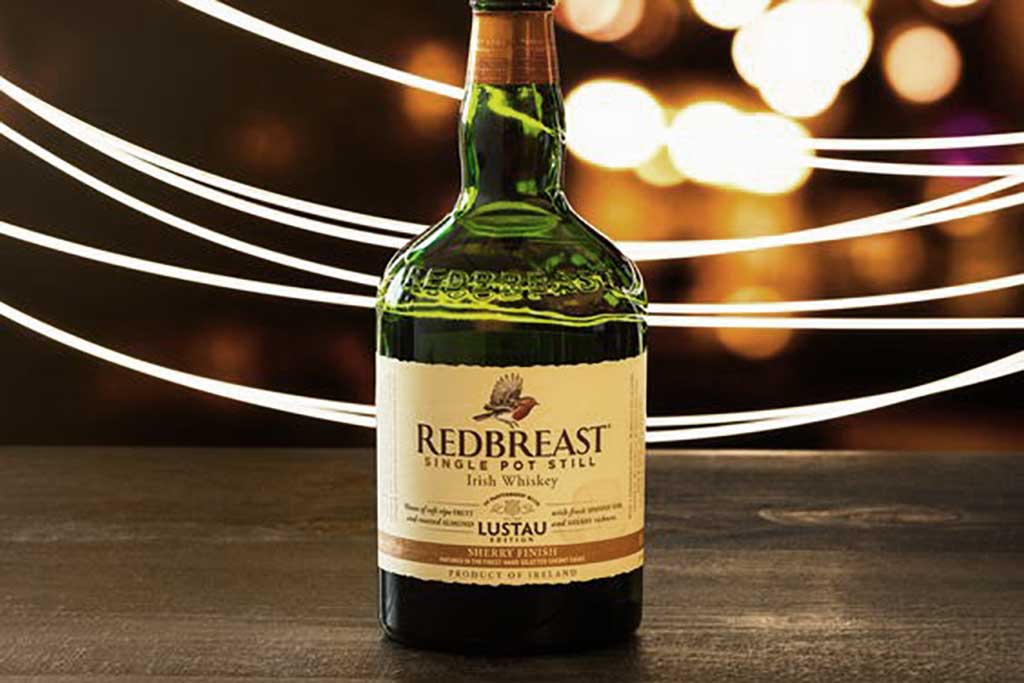
Redbreast 12 Review
When I first picked up a bottle of Redbreast 12, I was looking for an entry into the world of premium Irish whiskies without breaking the bank. On that front, Redbreast 12 didn’t just meet my expectations—it surpassed them.
The nose of Redbreast 12 is a treat in itself. It greets you with a pleasant mix of sweetness and warmth. Up front, there’s a rich scent of ripe fruits, similar to apples and plums, wrapped up with a hint of malt. On the backdrop, there’s a comforting presence of vanilla and honey. It’s simple, yet incredibly inviting, much like a homemade fruit crumble fresh from the oven.
The mouthfeel of Redbreast 12 is both smooth and substantial. It’s medium-bodied with a delightful creaminess to it that clings softly to the palate. The texture isn’t heavy, but there’s a certain weightiness to it that contributes to its full-bodied perception.
Every sip feels substantial and satisfying, setting the stage for the flavours that follow. Speaking of flavours, let’s get on to it.
The flavours of Redbreast 12 echo its aroma but with a few additional layers. The taste is a fusion of ripe fruits, honeyed sweetness, and toasted grain. A light sprinkle of spice comes through, adding a spark of warmth to the proceedings. Then, there’s a dash of oaky dryness towards the end that serves to balance the sweetness and prevent it from becoming overpowering.
It finishes on a medium note, giving you just enough time to appreciate its balanced complexity. The sweet and spicy flavours mellow down to leave a lingering note of honeyed grain and soft oak. It’s smooth, pleasant and gently encouraging of another sip.
With a strength of 40% ABV or 80 proof, Redbreast 12 is mellow, yet not lacking in spirit. It carries enough punch to assert its presence, but not so much as to dominate the palate. It’s a balance that allows the richness of the flavours to take centre stage.
In comparison to other Irish whiskies, I find Green Spot comes quite close to Redbreast 12. Both share a certain level of fruitiness and spice, though each holds its unique character. Just in case you’re curious, we actually have a Green Spot vs Redbreast 12 article for this.
Priced at £46.99 or $60, Redbreast 12 offers a wallet-friendly entry point into the world of quality Irish whiskies. When compared to Redbreast 15, which sells for nearly double the price, the affordability of Redbreast 12 becomes even more apparent. However, don’t let the lower price tag fool you. While it’s significantly less expensive, Redbreast 12 still delivers a premium whiskey experience that’s worth every penny.
It was more accessible unlike the 15, but it didn’t compromise on quality or complexity. It’s the kind of whisky that has an approachability about it, yet also enough depth to be considered seriously.
Redbreast 15 vs. 12: The Comparison
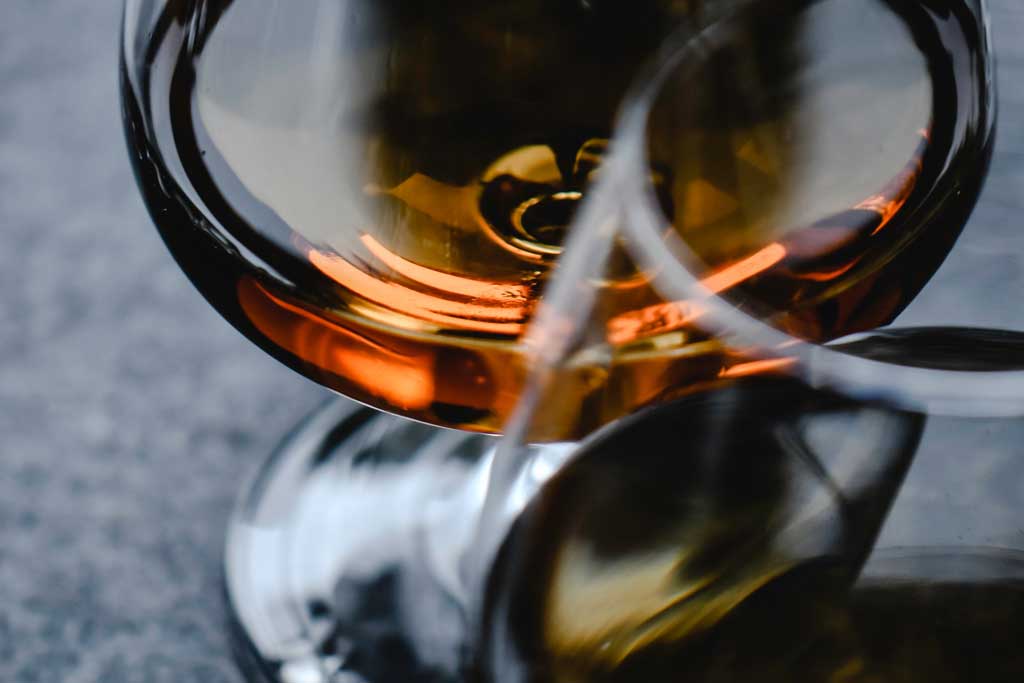
Nose Comparison
As you pour yourself a dram of Redbreast 15, your nose will be greeted by a complex, multifaceted aroma profile. Ripe fruits, warm spices, and a hint of oakiness join together in a mature scent that suggests a sophisticated whisky experience is on the cards. Some people adore this complexity, while others may find it a bit overwhelming.
In contrast, Redbreast 12 has a more straightforward, accessible nose. It presents a welcoming combination of fresh apples, plums, vanilla, and honey. It’s simple yet inviting, perfect for those who prefer a less intricate nose. However, whisky aficionados might find it a tad too plain or basic.
Mouthfeel Comparison
Redbreast 15 gives you a rich, full-bodied sensation. There’s a creaminess that fills your mouth, making the whisky feel substantial and robust. This can be an exciting sensory experience for experienced drinkers, but it might feel a bit intense for those new to whisky. On the other hand, Redbreast 12 offers a smoother, medium-bodied texture that’s more approachable. It’s easy on the palate, making it an excellent choice for novices or those who prefer lighter whiskies.
Still, fans of weightier whiskies might find it a bit lacking.
Flavour/Palate Comparison
On the palate, Redbreast 15 serves up an array of mature, complex flavours. Dark chocolate, ripe fruits, roasted nuts, vanilla, oak, and warm spices—it’s like a symphony playing in your mouth. Yet, this complexity can sometimes feel a bit much, especially for those who favour simpler flavour profiles.
Conversely, Redbreast 12 provides a more direct, focused palette of ripe fruits, honeyed sweetness, and toasted grain. It’s a clear, straightforward flavour journey that’s easy to enjoy. But, the downside is that it could seem a bit too basic for some discerning palates.
Finish Comparison
The finish of Redbreast 15 is long-lasting, leaving a trail of dried fruits and oakiness that linger for a while. This can be a delightful end to a sip for those who love extended finishes, but some people might find it overstays its welcome.
And Redbreast 12 has a medium finish that mellows down to a pleasant note of honeyed grain and soft oak. It’s a smooth, amicable finish, although those who love a dramatic, lingering ending might find it a bit short-lived.
ABV Comparison
Redbreast 15, at 46% ABV, packs a stronger punch compared to Redbreast 12, which stands at 40% ABV. This difference in alcohol content noticeably affects the drinking experience. The higher proof of Redbreast 15 results in more pronounced flavours and mouthfeel, which could be thrilling for seasoned drinkers but potentially overpowering for newcomers.
Price Comparison
Finally, we can’t overlook the obvious price factor. Redbreast 15, priced at £86 or $110, is almost double the cost of Redbreast 12, which sits at £53 /$69. If you’re on a budget, you might struggle to justify the higher price point of Redbreast 15, despite its complexity.
On the other hand, while Redbreast 12 is more affordable, some might argue that the price reflects its simpler profile and less mature character.
You need to consider how much you’re willing to pay for complexity and maturity in your whisky.
But, how do these whiskeys go with food? Let’s break it down:
Food pairings
When you’re sitting down to your starters, both Redbreast 15 and Redbreast 12 have their unique pairings. Redbreast 15, with its complex fruit and spice notes, matches well with rich, full-flavoured appetisers like seared scallops or a gourmet mushroom tart. However, the complexity might be overpowering for lighter fare.
On the other hand, the simpler, fruit-forward profile of Redbreast 12 pairs brilliantly with fresh, zingy starters. Think smoked salmon or a goat cheese and beetroot salad. Its lightness might leave you wishing for a bit more intensity with heavier starters, though.
Main courses
When it comes to the main course, Redbreast 15’s complexity shines through again. Its robust flavours stand up well to hearty, rich dishes like roast beef or lamb shanks. You might find it overwhelming if you prefer a lighter main course, though.
Redbreast 12, with its approachable fruity and vanilla notes, goes well with poultry dishes or grilled fish. It’s a gentle accompaniment that won’t overpower your food. But, for heavier, spicier dishes, it might lack the necessary depth.
Desserts
Dessert time brings another opportunity for a delightful whisky pairing. Redbreast 15, with its dark chocolate and ripe fruit notes, can be a great match for a rich, dark chocolate tart or a caramel-based dessert. However, it might be too intense for delicate, lightly sweet desserts.
On the flip side, Redbreast 12, with its honeyed sweetness, pairs nicely with a variety of desserts. Try it with a fruit crumble or a simple vanilla panna cotta. Keep in mind, though, it might fall short when paired with overly rich or indulgent desserts.
Neat or on the Rocks?
Finally, whether you drink your whisky neat or on the rocks is entirely up to you and how you like your drink. If you like your whisky neat, you might prefer Redbreast 15, as the full-bodied, complex flavour profile is beautifully showcased when served straight. But remember, its potency can be a bit too much for some palates.
Alternatively, Redbreast 12 is delightful on the rocks. The ice can help mellow out the flavours and make it an even smoother sip. However, whisky purists might argue that serving it on the rocks dilutes the flavour slightly.
Ultimately, it’s a choice you’ll have to make based on what you like.
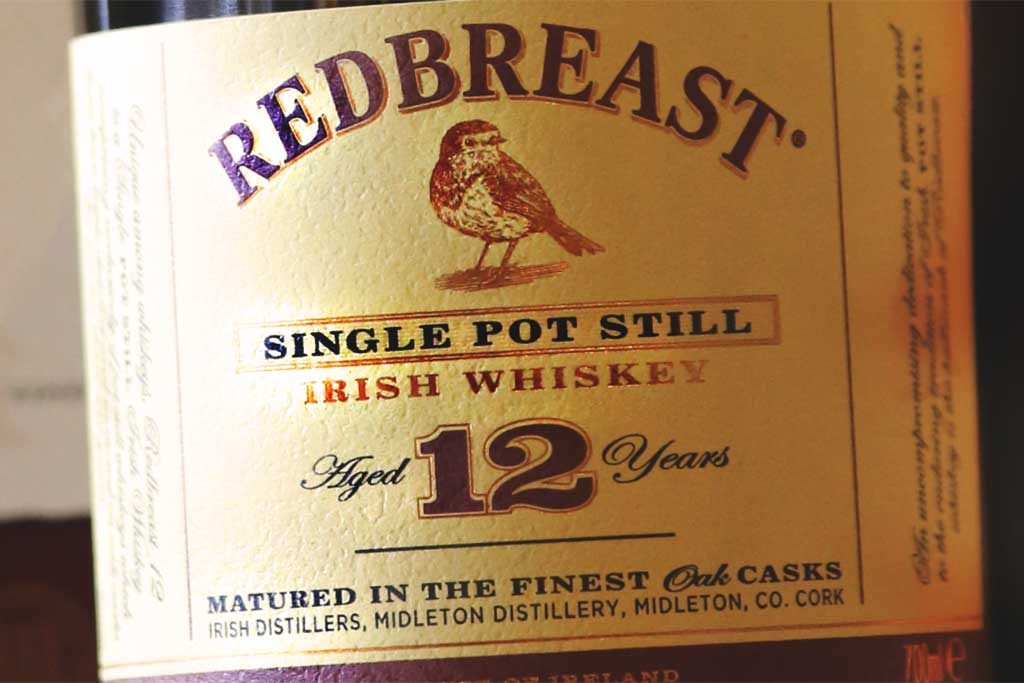
Redbreast 15 vs. 12: Author’s Pick
Before we get to the main points: I’ll admit, that the deep, rich amber colour of the Redbreast 15 is an absolute delight to the eyes. It holds a promise of the matured, complex whiskey within. While the lighter hue of the Redbreast 12 is attractive, it doesn’t have that same allure as the 15’s inviting depth of colour.
The nose is where the Redbreast 12 begins to take the lead for me. While the 15 has a more layered and sophisticated aroma, I found myself appreciating the simpler, fruitier nose of the 12. The clean scents of apple, pear, and a hint of vanilla in the 12 are less demanding and more relaxing.
On the mouth, the Redbreast 12 has a smooth, medium-bodied texture that feels just right on the palate. The Redbreast 15, while luxurious in its full-bodied creaminess, can be a bit overwhelming for frequent sipping.
The 15’s flavour profile is undoubtedly more complex and expansive. Yet, I prefer the simpler, clear-cut, fruit-forward palette of the Redbreast 12. It’s an uncomplicated pleasure that I can enjoy without dissecting multiple layers of flavour.
Now, I have to give it to the Redbreast 15 when it comes to the finish. Its long, warming, and evolving finish is a true delight. The Redbreast 12, with its shorter, mellower finish, while pleasant, doesn’t quite offer that same depth of experience.
Quite the tug-of-war between the two. Every time I switched my attention between the two, my decision also swayed back and forth. I must admit, this was a tough battle between the two.
Ultimately, Redbreast 12 wins the battle by the skin of its teeth.
And my choice for Redbreast 12 over the 15 comes down to its simplicity and approachability. It’s a whisky I can enjoy at any time—ready to accompany me on any day, no matter what mood I’m in. And isn’t that what we want from a good whisky?
What do you think?


